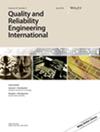软件可靠性预测:机器学习和近似贝叶斯推理方法
IF 2.8
3区 工程技术
Q3 ENGINEERING, INDUSTRIAL
引用次数: 0
摘要
可靠性增长模型通常分为两大类:参数模型和非参数模型。参数模型,即软件可靠性增长模型(SRGM),依赖于一组可能影响模型预测准确性的假设,而非参数模型(如神经网络)则可以完全根据训练数据预测模型,而无需对模型本身做出任何假设。在本文中,我们提出了几种提高软件可靠性预测准确性的方法。具体来说,一方面,我们介绍了两种基于梯度的技术,用于估计经典 SRGM 的参数。另一方面,我们在朗格文梯度和变量推理神经网络中提出了涉及 LSTM 编码器-解码器和贝叶斯近似的方法。为了评估我们提出的模型的性能,我们使用三个真实世界的软件故障数据集,将它们与各种基于神经网络的软件可靠性模型进行了比较,并使用平均平方误差(MSE)作为模型比较标准。实验结果表明,我们提出的非参数模型优于大多数经典参数和非参数模型。本文章由计算机程序翻译,如有差异,请以英文原文为准。
Software reliability prediction: A machine learning and approximation Bayesian inference approach
Reliability growth models are commonly categorized into two primary groups: parametric and non‐parametric models. Parametric models, known as Software Reliability Growth Models (SRGM) rely on a set of hypotheses that can potentially affect the accuracy of model predictions, while non‐parametric models (such as neural networks) can predict the model solely based on training data without any assumptions regarding the model itself. In this paper, we propose several methods to enhance prediction accuracy in software reliability context. More specifically, we, on one hand, introduce two gradient‐based techniques for estimating parameters of classical SRGMs. On the other, we propose methods involving LSTM Encoder–Decoder and Bayesian approximation within Langevin Gradient and Variational inference neural networks. To evaluate our proposed models' performance, we compare them with various neural network‐based software reliability models using three real‐world software failure datasets and utilizing the Mean Square Error (MSE) as a model comparison criterion. The experimental results indicate that our proposed non‐parametric models outperform most classical parametric and non‐parametric models.
求助全文
通过发布文献求助,成功后即可免费获取论文全文。
去求助
来源期刊
CiteScore
4.90
自引率
21.70%
发文量
181
审稿时长
6 months
期刊介绍:
Quality and Reliability Engineering International is a journal devoted to practical engineering aspects of quality and reliability. A refereed technical journal published eight times per year, it covers the development and practical application of existing theoretical methods, research and industrial practices. Articles in the journal will be concerned with case studies, tutorial-type reviews and also with applications of new or well-known theory to the solution of actual quality and reliability problems in engineering.
Papers describing the use of mathematical and statistical tools to solve real life industrial problems are encouraged, provided that the emphasis is placed on practical applications and demonstrated case studies.
The scope of the journal is intended to include components, physics of failure, equipment and systems from the fields of electronic, electrical, mechanical and systems engineering. The areas of communications, aerospace, automotive, railways, shipboard equipment, control engineering and consumer products are all covered by the journal.
Quality and reliability of hardware as well as software are covered. Papers on software engineering and its impact on product quality and reliability are encouraged. The journal will also cover the management of quality and reliability in the engineering industry.
Special issues on a variety of key topics are published every year and contribute to the enhancement of Quality and Reliability Engineering International as a major reference in its field.

 求助内容:
求助内容: 应助结果提醒方式:
应助结果提醒方式:


